Abstract
Three newborn infants with meningitis due to Flavobacterium meningosepticum were treated with rifamycin administered parenterally and directly into the cerebral ventricles. Antibiotic concentrations of blood and cerebrospinal fluid (CSF) were monitored during treatment. There was rapid sterilization of the CSF after this antibiotic. Jaundice was the only toxicity noted. All 3 infants developed hydrocephalus and are shunt dependent. Two of them are otherwise free of neurological complications and are developing normally. Rifamycin is a safe and effective antibiotic in this form of neonatal meningitis.
Full text
PDF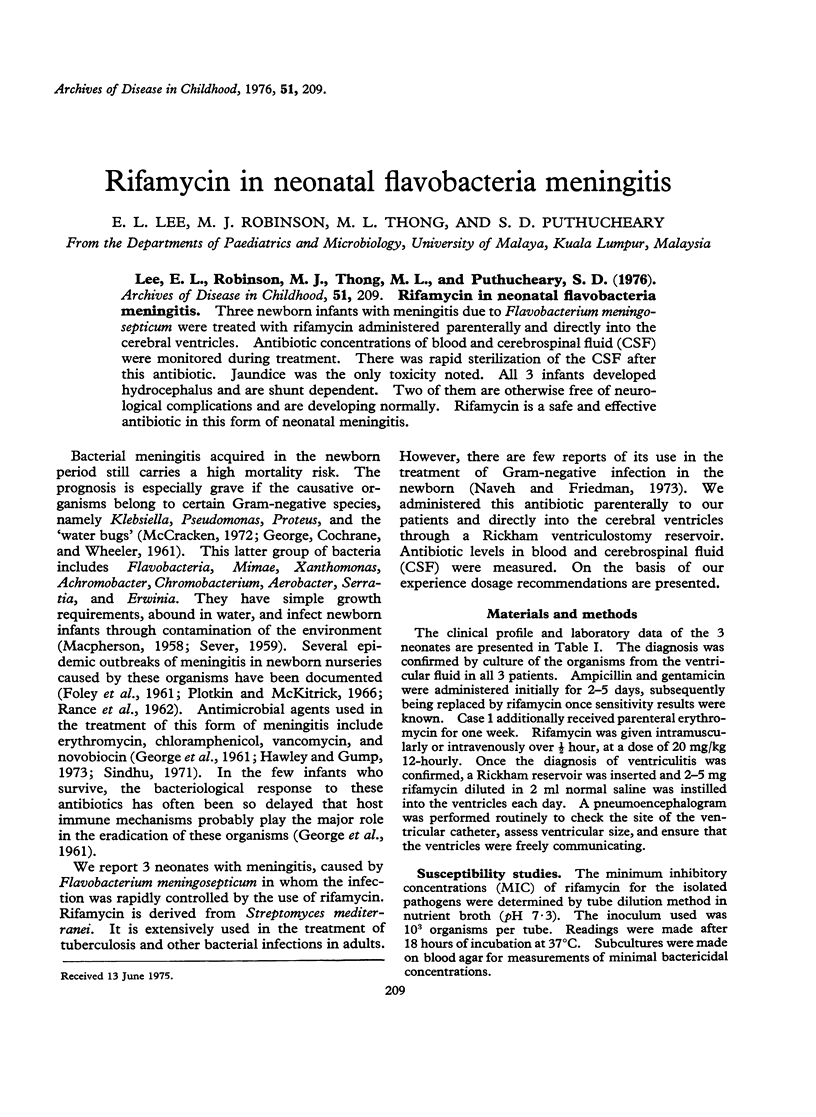
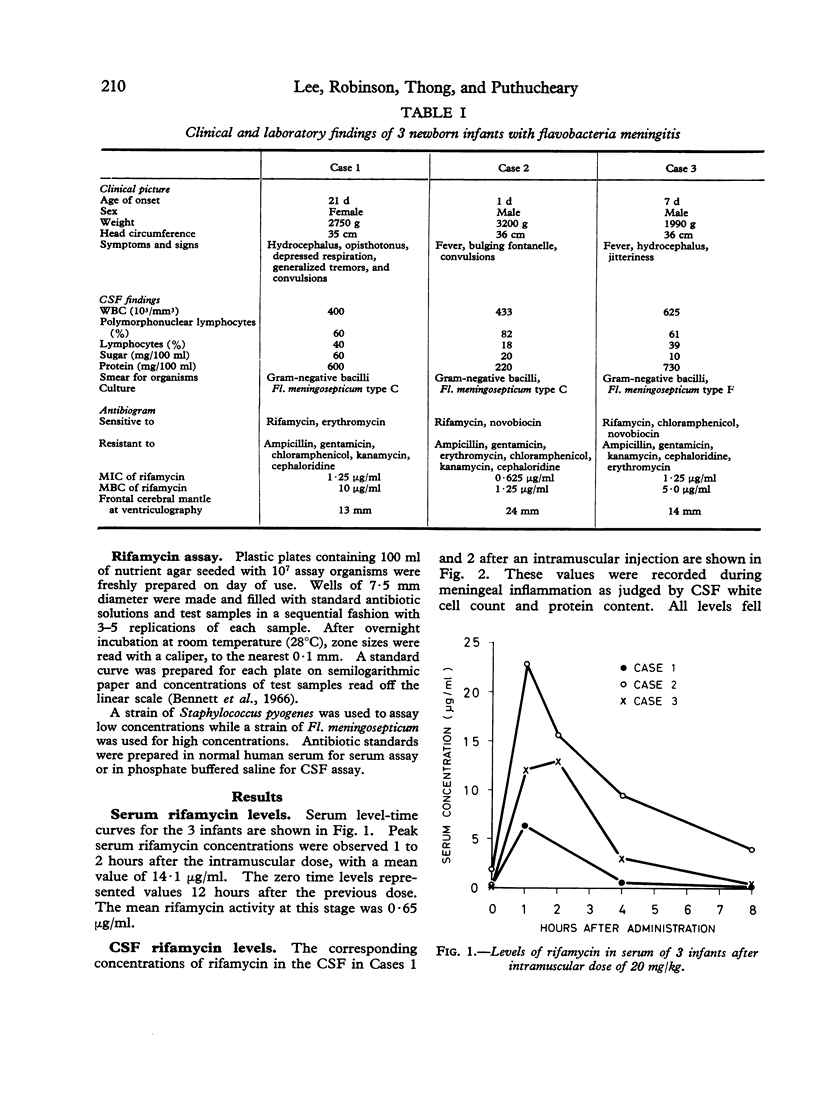
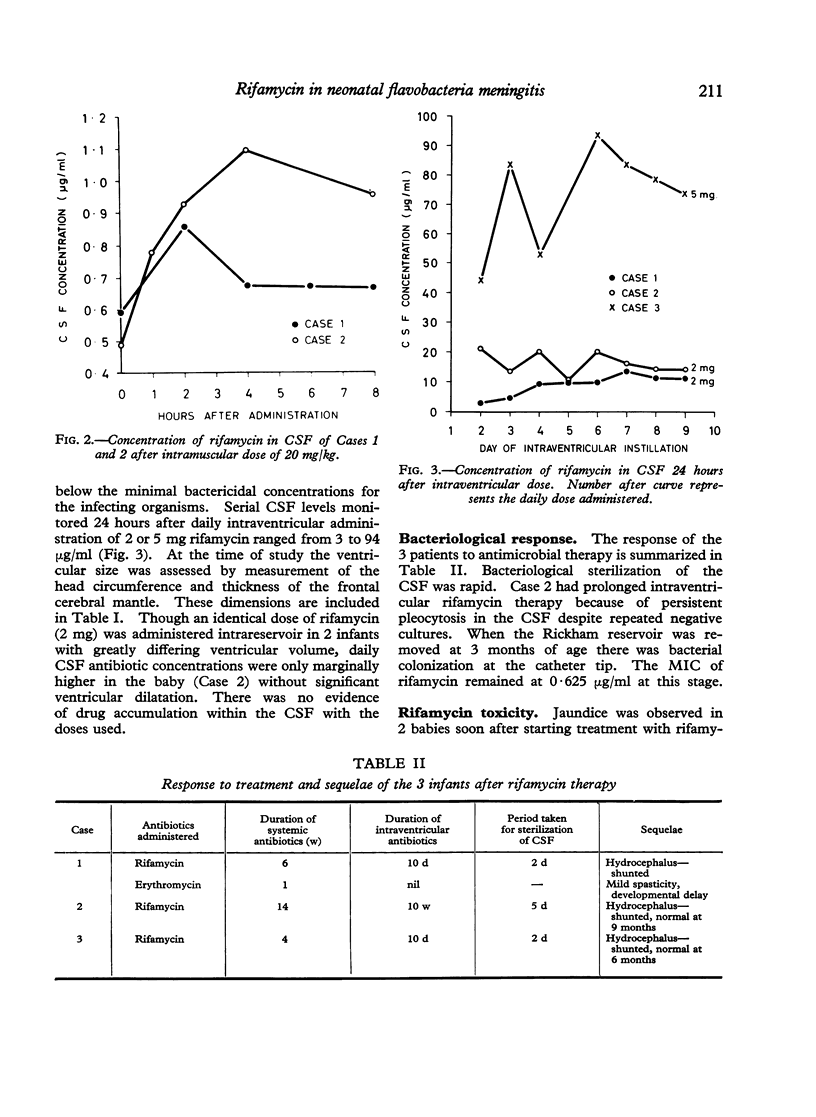
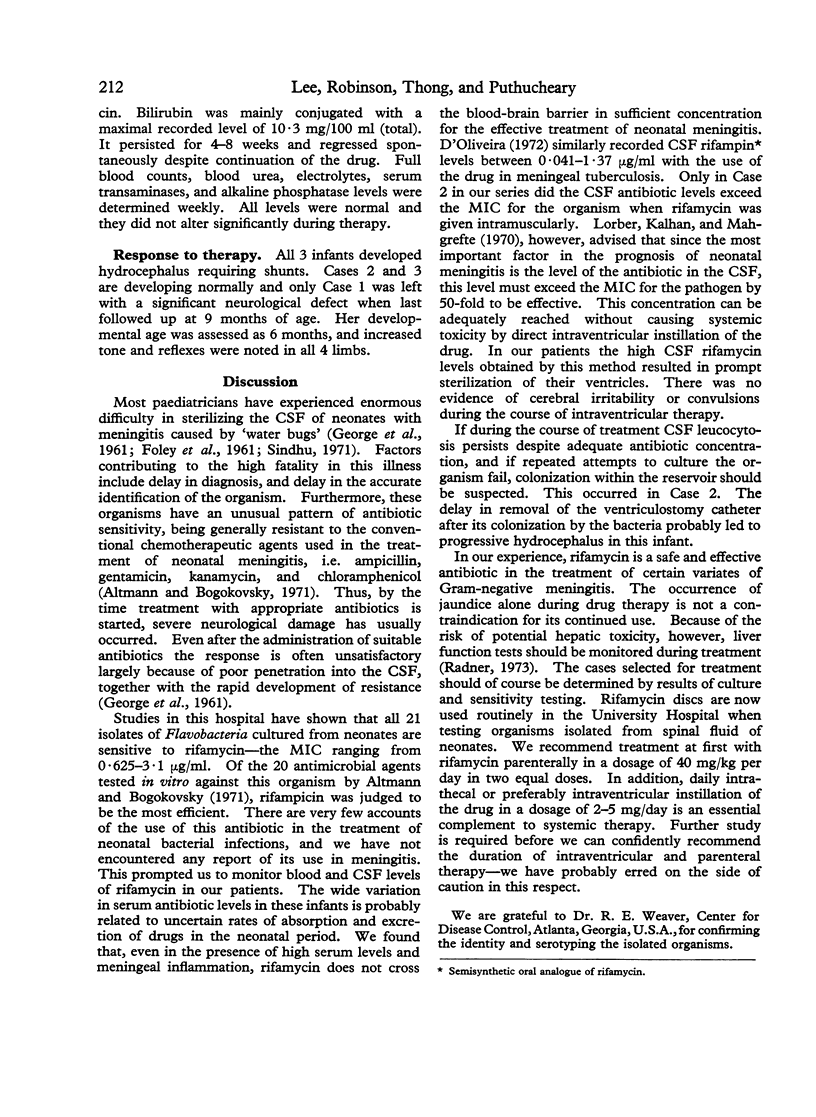
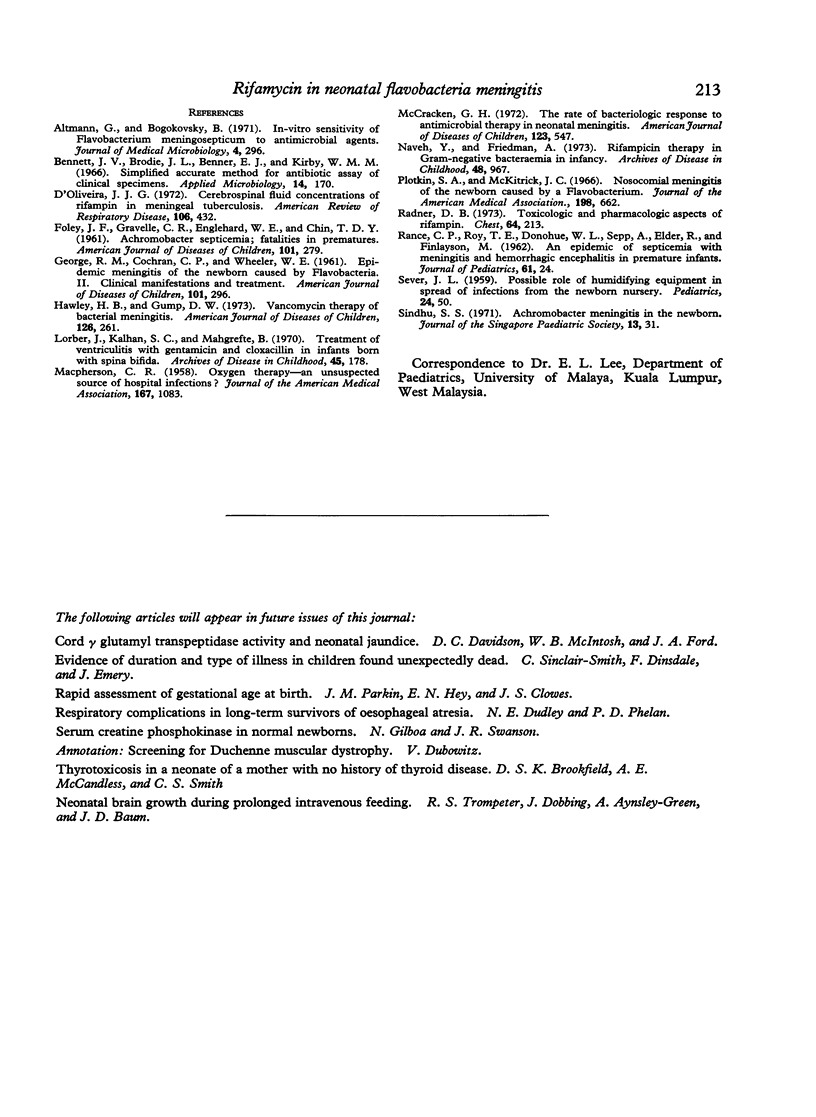
Selected References
These references are in PubMed. This may not be the complete list of references from this article.
- Altmann G., Bogokovsky B. In-vitro sensitivity of Elavobacterium meningosepticum to antimicrobial agents. J Med Microbiol. 1971 May;4(2):296–299. doi: 10.1099/00222615-4-2-296. [DOI] [PubMed] [Google Scholar]
- Bennett J. V., Brodie J. L., Benner E. J., Kirby W. M. Simplified, accurate method for antibiotic assay of clinical specimens. Appl Microbiol. 1966 Mar;14(2):170–177. doi: 10.1128/am.14.2.170-177.1966. [DOI] [PMC free article] [PubMed] [Google Scholar]
- D'Oliveira J. J. Cerebrospinal fluid concentrations of rifampin in meningeal tuberculosis. Am Rev Respir Dis. 1972 Sep;106(3):432–437. doi: 10.1164/arrd.1972.106.3.432. [DOI] [PubMed] [Google Scholar]
- FOLEY J. F., GRAVELLE C. R., ENGLEHARD W. E., CHIN T. D. Achromobacter septicemia-fatalities in prematures. I. Clinical and epidemiological study. Am J Dis Child. 1961 Mar;101:279–288. [PubMed] [Google Scholar]
- GEORGE R. M., COCHRAN C. P., WHEELER W. E. Epidemic meningitis of the newborn caused by flavobacteria. II. Clinical manifestations and treatment. Am J Dis Child. 1961 Mar;101:296–304. doi: 10.1001/archpedi.1961.04020040024005. [DOI] [PubMed] [Google Scholar]
- Hawley H. B., Gump D. W. Vancomycin therapy of bacterial meningitis. Am J Dis Child. 1973 Aug;126(2):261–264. doi: 10.1001/archpedi.1973.02110190231025. [DOI] [PubMed] [Google Scholar]
- Lorber J., Kalhan S. C., Mahgrefte B. Treatment of ventriculitis with gentamicin and cloxacillin in infants born with spina bifida. Arch Dis Child. 1970 Apr;45(240):178–185. doi: 10.1136/adc.45.240.178. [DOI] [PMC free article] [PubMed] [Google Scholar]
- MACPHERSON C. R. Oxygen therapy; an unsuspected source of hospital infections. J Am Med Assoc. 1958 Jun 28;167(9):1083–1086. doi: 10.1001/jama.1958.02990260025006. [DOI] [PubMed] [Google Scholar]
- McCracken G. H., Jr The rate of bacteriologic response to antimicrobial therapy in neonatal meningitis. Am J Dis Child. 1972 Jun;123(6):547–553. doi: 10.1001/archpedi.1972.02110120071004. [DOI] [PubMed] [Google Scholar]
- Naveh Y., Friedman A. Rifampicin therapy in Gram-negative bacteraemia in infancy. Arch Dis Child. 1973 Dec;48(12):967–969. doi: 10.1136/adc.48.12.967. [DOI] [PMC free article] [PubMed] [Google Scholar]
- Plotkin S. A., McKitrick J. C. Nosocomial meningitis of the newborn caused by a flavobacterium. JAMA. 1966 Nov 7;198(6):662–664. [PubMed] [Google Scholar]
- RANCE C. P., ROY T. E., DONOHUE W. L., SEPP A., ELDER R., FINLAYSON M. An epidemic of septicemia with meningitis and hemorrhagic encephalitis in premature infants. J Pediatr. 1962 Jul;61:24–32. doi: 10.1016/s0022-3476(62)80225-x. [DOI] [PubMed] [Google Scholar]
- Radner D. B. Toxicologic and pharmacologic aspects of rifampin. Chest. 1973 Aug;64(2):213–216. doi: 10.1378/chest.64.2.213. [DOI] [PubMed] [Google Scholar]
- SEVER J. L. Possible role of humidifying equipment in spread of infections from the newborn nursery. Pediatrics. 1959 Jul;24(1):50–53. [PubMed] [Google Scholar]


